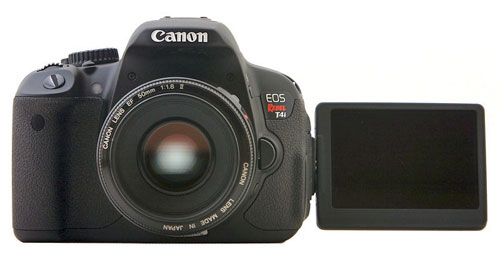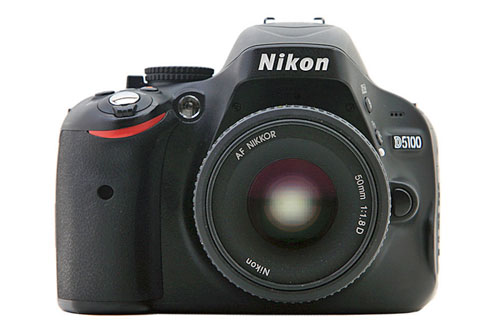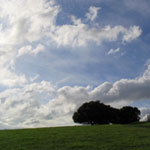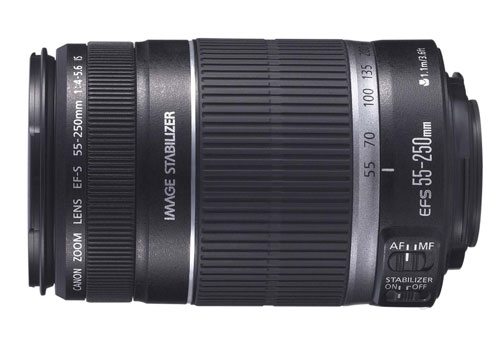| Back to Back Issues Page | |||||||||||||||||||||||||||||||||||||||||||||||||||
 |
|||||||||||||||||||||||||||||||||||||||||||||||||||
|
DSLR Guide News - Reviews: Canon T4i and Nikon D5100 July 29, 2012 |
|||||||||||||||||||||||||||||||||||||||||||||||||||
Having trouble viewing this newsletter? Read the latest issue online at
https://www.digital-slr-guide.com/dslr-news-07-12.html or read back issues If someone you know has forwarded you this newsletter and you've enjoyed it, subscribe now to receive the next issue when it's published.
DSLR News - July 2012
In This Issue
I've recently had the pleasure of using both the new Canon Rebel T4i 650D (Release Date: June 2012) and the older Nikon D5100 (Release Date: April 2011).
While these two cameras overlap on a lot of features, each one has its own distinct feel and style.
Of course, once you have the right camera in hand, you'll need a great lens to go with it.
Unfortunately, most lens names include so many abbreviations you practically have to learn a foreign language to understand them.
In this issue I'll provide you with a special "decoder" table that explains what all these abbreviations mean so you can decide if you really need a lens that has them all.
Stay Updated!The Digital SLR Guide is also on Facebook. If you're on Facebook, drop on by to get updates about new digital SLR cameras and photo tips.Recent Review - Canon T4i 650D
The big news about the Canon T4i 650D is its touch-screen LCD which lets you manipulate camera settings by tapping the LCD.
You can use the touch-screen in a variety of ways: to take pictures, set focus points, change camera settings or playback images.
I found it most useful for setting precise off-center focus points and for changing setting. I originally thought I would use it to change settings all the time, but discovered that I used the buttons and dials a bit more when actively shooting.
The main issue for me with changing settings using the touch-screen is that I had to lower the camera from my eye - this interrupted the "flow" when taking pictures. If I needed to make a slight adjustment to ISO, I would just spin a dial instead of tapping on the LCD.
A more useful application of the touch-screen is the ability to set focus points, especially if your primary subject isn't dead-center in the frame.
Imagine that you have three people standing in a line and you want to set the focus point on the face of the person in the middle. With another DSLR, this would involve selecting a specific focus point and then adjusting your camera position carefully to get the focus right.
With the Canon T4i 650D, you just touch the face of the person you want the camera to focus on. Face-detection autofocus takes over and stays locked on the person's face, even if he or she doesn't stand perfectly still.
You can read more about the touch screen and many other features of this versatile DSLR in my Canon T4i 650D Review.
Beginner Digital SLR Lessons
Recent Review - Nikon D5100
The marquee feature of the Nikon D5100 is its flexible LCD that flips out to the side of the camera and rotates.
Useful for high and low-angle photography, this type of LCD also makes shooting video substantially easier since you can hold the camera at any angle and still clearly see the image on the LCD.
The previous model - the Nikon D5000 - was the first Nikon DSLR to include a flexible LCD screen.
The main difference is that that LCD flipped DOWN from the bottom of the camera. This wasn't an issue if you held the camera in your hands, but it meant that the LCD could not flip down when the camera was on a tripod.
In addition to its flexible LCD screen, I was very impressed with how the D5100 handled image noise at high ISO settings.
You can easily take pictures at ISO 3200 and 6400 and unless you have plans to print them at enormous sizes, you'll be hard-pressed to notice any reduction in image quality.
The full HD 1080p video quality is superb, but autofocus in movie mode can be imprecise - for best results, I often used manual focus.
You can read more about this mid-level camera in my Nikon D5100 Review.
If you're curious about how the D5100 compares to the predecessor to the Canon T4i, take a look at my comparison of the Canon T3i 600D vs. the Nikon D5100.
Intermediate Digital SLR Lessons
Decoding Lenses
Finding the best lens for your digital SLR can be an exceptionally challenging task.
There are many more lenses out there than cameras and it's difficult to decode all the abbreviations that manufacturers associate with their lenses.
In an attempt to shed some clarity on this issue, here's a list of some of the most common lens abbreviations and their meanings.
In addition to an abbreviation decoder, you will also need to understand focal length and maximum aperture notation.
Focal length is measured in millimeters, and determines the angle of view a lens can capture. Lenses with short focal lengths capture wide views (landscapes) while lenses with long focal lengths are better suited for close-ups (sports, wildlife).
Maximum aperture indicates how wide a lens can open and how much light it lets in. Many lenses have variable maximum apertures, which means the max aperture gets narrower the more you zoom the lens.
For example, let's take a look at the standard kit lens: an 18-55mm f/3.5-5.6.
The numbers in millimeters indicate that this is a zoom lens that covers ALL focal lengths between 18 and 55mm. This is a good lens for landscapes and portraits.
In addition to the focal length, you'll see TWO maximum apertures listed, f/3.5 and f/5.6. This means that when the lens is set to its 18mm focal length the max aperture is f/3.5, but when the lens is zoomed to 55mm that max aperture narrows to f/5.6.
Let's put all this information together to decode the following lens: a Nikon 55-300mm f/4.5-5.6 G ED VR AF-S.
If all this lens numerology seems a tad overwhelming to you, there's an easier way to find great lenses - just take advantage of the research that I've done.
It's been some time since I've updated my list of "best digital SLR lenses" but I am working on it now, finding good lenses for all the different manufacturers.
I recently updated my page for the Best Portrait Lenses and I'll do the same for landscape, closeup, and wildlife lenses in the next month.
Keep an eye on the Digital SLR Guide's Facebook page and Twitter feed to be notified when these pages are updated.
Additional Reading
In Conclusion
I've been so busy lately that I haven't had the time to get out and take as many pictures as I'd like.
Hopefully the same does not apply to you and that the pleasant Summer weather - at least for anyone in the Northern hemisphere - is a good reason to get out and about with your camera in hand.
For my part, I'm hoping to get a few new cameras to review soon since that motivates me to get outside and take pictures.
Until the next issue - happy picture-taking!
--Chris Roberts, Your Digital SLR Guide
|
|||||||||||||||||||||||||||||||||||||||||||||||||||
| Back to Back Issues Page |





